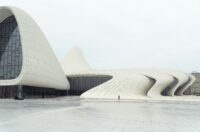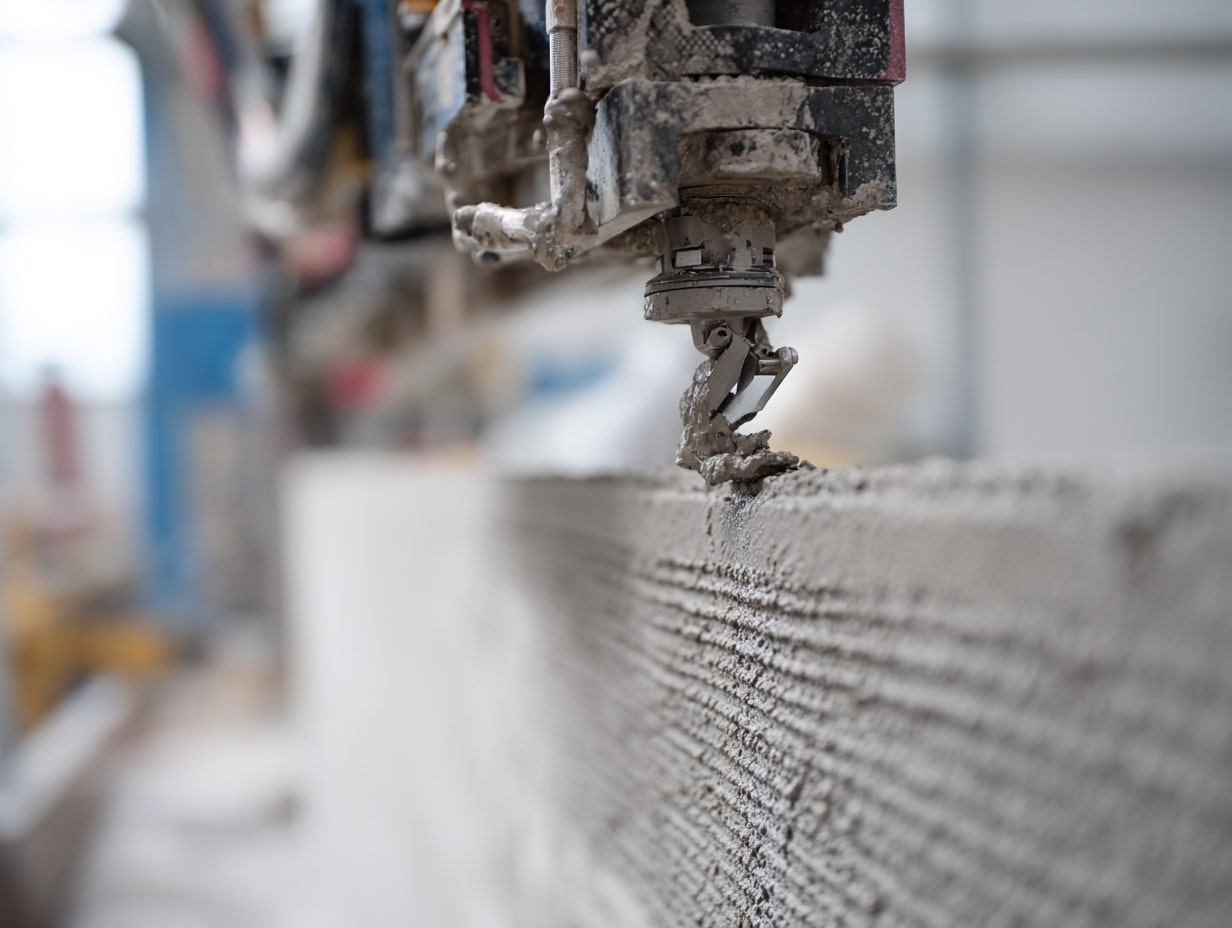- Home
- Articles
- Architectural Portfolio
- Architectral Presentation
- Inspirational Stories
- Architecture News
- Visualization
- BIM Industry
- Facade Design
- Parametric Design
- Career
- Landscape Architecture
- Construction
- Artificial Intelligence
- Sketching
- Design Softwares
- Diagrams
- Writing
- Architectural Tips
- Sustainability
- Courses
- Concept
- Technology
- History & Heritage
- Future of Architecture
- Guides & How-To
- Art & Culture
- Projects
- Interior Design
- Competitions
- Jobs
- Store
- Tools
- More
- Home
- Articles
- Architectural Portfolio
- Architectral Presentation
- Inspirational Stories
- Architecture News
- Visualization
- BIM Industry
- Facade Design
- Parametric Design
- Career
- Landscape Architecture
- Construction
- Artificial Intelligence
- Sketching
- Design Softwares
- Diagrams
- Writing
- Architectural Tips
- Sustainability
- Courses
- Concept
- Technology
- History & Heritage
- Future of Architecture
- Guides & How-To
- Art & Culture
- Projects
- Interior Design
- Competitions
- Jobs
- Store
- Tools
- More
Explore the Top 5 Cities with Distinct Architecture that Define Urban Charm
Discover the architectural gems of Barcelona, Florence, Tokyo, Istanbul, and Sydney in this captivating exploration of distinct styles that reflect history and culture. From Gaudí's Sagrada Família to the elegance of the Florence Cathedral, each city boasts unique landmarks that enchant visitors and shape local identities.

When we think about the charm of a city, its architecture often steals the spotlight. Unique buildings and structures tell stories of history, culture, and innovation, making each city a canvas of creativity. From towering skyscrapers to quaint historic districts, the architectural diversity around the globe captivates us and sparks our imagination.
In this article, we’ll explore five cities that stand out for their distinct architectural styles. Each destination offers a visual feast that reflects its unique heritage and artistic vision. Whether you’re an architecture enthusiast or just someone looking to appreciate the beauty of urban landscapes, these cities are sure to inspire and ignite our wanderlust. Let’s dive into the remarkable world of architecture that defines these vibrant locations.

Table of Contents
ToggleOverview of Distinct Architecture
Architecture shapes our environment and influences our experience in cities. Distinct architectural styles reflect the history, culture, and social values of each location, often serving as visual markers of identity. Unique buildings tell stories and highlight various artistic movements, showcasing creativity and innovation.

We observe several architectural styles that define cities worldwide. Gothic, Baroque, Modern, and Art Deco are just a few examples representing different time periods and cultural influences. Each city we explore possesses iconic structures that attract millions of visitors each year, enhancing urban appeal.
Distinct architecture not only provides aesthetic enjoyment but also functions within the city’s cultural ecosystem. For example, historic buildings often house museums, galleries, or restaurants, contributing to local economies. Their preservation is crucial for maintaining identity while fostering appreciation for architectural heritage.
Understanding these architectural elements allows us to appreciate the meticulous craftsmanship involved in creating these landmarks. Analyzing the features of each city’s architecture unveils the diverse influences that shape urban landscapes. Through this exploration, we can better grasp the artistic vision that each city offers, enriching our experience as we discover these architectural treasures.
City One: Barcelona
Barcelona stands out for its vibrant architectural landscape, seamlessly blending history and modernity. The city’s structures reflect various styles, highlighting its rich cultural heritage.

Architectural Highlights
Gaudí’s Sagrada Família, an iconic basilica, showcases distinct Catalan Modernism with its intricate facades and towering spires, mesmerizing visitors since construction began in 1882. Park Güell, another Gaudí masterpiece, features colorful mosaics and whimsical forms set against a backdrop of lush greenery. The Gothic Quarter transports us to medieval times, where narrow streets and historical buildings tell stories of the past. The contemporary W Barcelona, resembling a billowing sail, adds a modern twist to the skyline, merging beachfront elegance with urban sophistication. Each of these architectural gems contributes to Barcelona’s unique character and allure.
Notable Architects
Antoni Gaudí defines Barcelona’s architectural identity, pioneering the Modernisme movement with imaginative designs that emphasize curves and natural forms. Lluís Domènech i Montaner, another key figure, created the UNESCO-listed Palau de la Música Catalana, renowned for its stunning mosaics and innovative structure. Ricardo Bofill’s Les Arcades exhibits postmodern influences, combining classical elements with contemporary vision. Together, these architects helped shape Barcelona’s aesthetic, elevating it as a destination for architecture enthusiasts and casual admirers alike.
City Two: Florence
Florence showcases a rich tapestry of architectural brilliance, reflecting its history as the cradle of the Renaissance. Renowned for its stunning buildings, the city draws attentions from around the globe.

Architectural Highlights
Florence boasts several architectural treasures that signify its artistic heritage. The Florence Cathedral (Duomo), with its iconic dome designed by Filippo Brunelleschi, dominates the skyline. The Palazzo Vecchio, embodying medieval strength, serves as a symbol of Florence’s power. The Uffizi Gallery, a masterpiece of Renaissance architecture, houses priceless artworks that highlight the city’s cultural wealth. Additionally, the Ponte Vecchio, a historic bridge lined with shops, offers a picturesque view over the Arno River. Each structure reflects the intricate styles and designs that flourished during this pivotal era.
Notable Architects
Florence’s architectural landscape features several influential figures. Brunelleschi, the genius behind the Duomo’s dome, pioneered structural techniques that influenced future architects. Leon Battista Alberti, known for his writings and designs, introduced principles that shaped Renaissance aesthetics. Giorgio Vasari contributed to the Uffizi Gallery’s design, blending functionality with ornate beauty. Our exploration of these architects reveals their lasting impact on both Florentine architecture and the broader architectural world. Each architect’s vision has left an indelible mark on the city’s identity, making Florence a true masterpiece of design.
City Three: Tokyo
Tokyo showcases a unique blend of the traditional and the ultra-modern in its architectural landscape. This city captivates with structures that reflect Japan’s rich cultural heritage and innovative spirit.

Architectural Highlights
We see Tokyo’s architecture through its iconic landmarks and districts. The Tokyo Tower, inspired by the Eiffel Tower, stands as a symbol of post-war modernization. The serene Senso-ji Temple in Asakusa contrasts its vibrant surroundings, illustrating Japan’s spiritual history. The ultra-modern Tokyo Skytree reaches 2,080 feet, serving both as a broadcasting tower and an observation deck, offering breathtaking views across the sprawling metropolis. Other significant locations include the Meiji Shrine, seamlessly blending nature with traditional Shinto architecture, and the bustling Shibuya Crossing, characterized by its neon lights and contemporary urban style. Each of these architectural highlights communicates Tokyo’s story, showcasing its evolution over centuries.
Notable Architects
We acknowledge architects who have profoundly influenced Tokyo’s skyline. Kenzō Tange, a pioneer of modernism in Japan, melded traditional Japanese elements with contemporary design, as seen in the Hiroshima Peace Memorial Museum. Tadao Ando, known for his minimalist approach, has created masterpieces like the Church of the Light, utilizing natural light and concrete to evoke a sense of calm. Fumihiko Maki, also prominent, contributes to Tokyo’s landscape with his innovative use of materials, particularly in the 4 World Trade Center and the National Art Center. These architects not only shape Tokyo’s physical environment but also embody the city’s spirit of blending tradition with innovation.
City Four: Istanbul
Istanbul showcases a remarkable blend of architectural styles, reflecting its rich history as a crossroads of cultures. From ancient mosques to contemporary masterpieces, the city’s architecture narrates its diverse heritage.

Architectural Highlights
Istanbul’s architectural landscape includes significant structures that define its skyline. The Hagia Sophia, originally a cathedral and later a mosque, features a massive dome and stunning mosaics, representing Byzantine architecture’s zenith. The Blue Mosque, known for its iconic blue tiles and six minarets, exemplifies Ottoman style. The Topkapi Palace, with its intricate details and sprawling courtyards, served as the residence of Ottoman sultans and highlights the influence of Islamic art and architecture. The contemporary Istanbul Modern Museum contrasts beautifully with historical sites, showcasing how modern design can coexist with traditional elements. Each landmark contributes uniquely to the city’s architectural narrative, attracting millions of visitors annually.
Notable Architects
Renowned architects like Mimar Sinan and Sedefkar Mehmed Ağa played pivotal roles in shaping Istanbul’s architectural identity. Mimar Sinan, the chief Ottoman architect of the 16th century, designed the Suleymaniye Mosque, considered one of his masterpieces. His innovative techniques laid the foundation for future structures in the region. Sedefkar Mehmed Ağa, the architect of the Blue Mosque, incorporated elements of both Byzantine and Islamic architecture, creating a harmonious structure admired worldwide. Modern architects such as Zaha Hadid also left their mark on Istanbul, with projects like the Vitra Fire Station illustrating contemporary design principles. Each architect’s contributions highlight Istanbul’s evolution and the enduring significance of its architectural heritage.
City Five: Sydney
Sydney boasts a dynamic architectural landscape that harmoniously merges historic and contemporary styles, making it a city renowned for its distinct building designs and stunning landmarks. From iconic structures to modern masterpieces, Sydney’s architecture captures a unique narrative of cultural evolution and innovation.

Architectural Highlights
Sydney’s architectural gems include the Sydney Opera House, a UNESCO World Heritage Site celebrated for its sail-like design by Jørn Utzon. The Sydney Harbour Bridge, an engineering marvel, complements the iconic opera house, creating a stunning skyline against the backdrop of the harbor. The Royal Botanic Garden features beautifully designed structures, such as the Calyx and the Art Gallery of New South Wales, blending nature with art. The Barangaroo development showcases a modern urban paradise, featuring sustainable architecture alongside waterfront views, while the historic Queen Victoria Building reflects the Romanesque Revival style, housing a vibrant shopping precinct. Each structure contributes uniquely to Sydney’s architectural identity, demonstrating innovation and heritage.
Notable Architects
Notable architects who have shaped Sydney’s architectural landscape include Jørn Utzon, whose vision brought the Sydney Opera House to life, and architect Richard Rogers, who contributed to the design of the International Terminal at Sydney Airport. Other influential figures include Harry Seidler, known for his modernist buildings like the Blues Point Tower and the eye-catching MLC Centre. Architect Elizabeth Farrelly has also played a significant role in promoting sustainable urban design through her work on projects such as The Goods Line, connecting the city through green spaces and enhancing public accessibility. Their contributions highlight Sydney’s ongoing architectural evolution, ensuring the city’s vibrancy continues to inspire both residents and visitors alike.
Conclusion
Distinct architecture significantly contributes to each city’s character, embodying its history, culture, and vision. Our exploration of Barcelona, Florence, Tokyo, Istanbul, and Sydney reveals the diversity in styles and influences that define urban landscapes. Each city offers a unique architectural narrative, showcasing structures that draw millions of visitors while enhancing local economies through tourism and cultural engagement.
Barcelona’s blend of historical and modern designs, inspired by architects like Antoni Gaudí, embodies artistic innovation. Florence stands as a testament to Renaissance brilliance, with masterpieces that reflect its rich cultural legacy. Tokyo merges traditional elements with cutting-edge designs, exemplifying a city in constant evolution. Istanbul’s architecture tells the story of a city at the crossroads of cultures, featuring influences from various civilizations. Sydney’s dynamic skyline highlights a vibrant mix of contemporary and historic elements, creating a unique urban tapestry.
Understanding these architectural distinctions fosters greater appreciation for the craftsmanship that shapes our environments, inviting us to explore the artistic heritage embedded in these remarkable cities. Each visit becomes an opportunity to connect with the story told through architecture, enriching our experience as we navigate through urban landscapes.
- architectural city tours
- architectural tour cities cities with unique architecture
- architecturally unique cities
- architecture tourism destinations iconic urban architecture
- architecture travel destinations
- architecture travel guide
- best cities for architects
- best cities for architecture lovers distinct architectural styles
- cities architecture tours
- cities with iconic buildings
- distinct architecture cities
- distinctive urban architecture
- famous architectural cities
- famous architectural landmarks
- historical architecture cities
- modern architecture cities
- renowned city architecture
- top architectural cities city architecture tours
- top cities for architecture
- unique city architecture
- unique city skylines
- urban architectural design cities
- urban charm destinations
- urban charm guide
- urban exploration architecture
- world architecture cities
I create and manage digital content for architecture-focused platforms, specializing in blog writing, short-form video editing, visual content production, and social media coordination. With a strong background in project and team management, I bring structure and creativity to every stage of content production. My skills in marketing, visual design, and strategic planning enable me to deliver impactful, brand-aligned results.
4 Comments
Submit your architectural projects
Follow these steps for submission your project. Submission FormLatest Posts
3D Printed Homes: Time, Cost, and What to Expect
3D printed homes explained: realistic timelines (24–72h walls, 8–16 weeks total), true...
How a Contact Centre Boosts Trust in Your Building Business
In construction, trust is the glue that holds projects together. Clients need...
How Real Time Parcel Geolocation Is Redefining Last Mile Efficiency for Modern Businesses
Last mile delivery has become the most critical point in the customer...
How Can Small Spaces Stay Stylish and Relaxing?
In today’s fast-paced urban lifestyle, small living spaces are becoming increasingly common....












The article talks about different cities and their buildings. It seems interesting, but I don’t know much about architecture. I like how they describe Barcelona and Florence.
I really loved this article! It’s amazing how each city has its own unique buildings that tell a story. I can’t wait to visit Barcelona and see Gaudí’s work in person! This post made me appreciate architecture so much more!
I don’t understand why everyone is so obsessed with architecture. A building is just a building, right? People talk about Barcelona and its Gaudí stuff like it’s the best thing ever, but honestly, who cares? The real charm of a city is its people and culture, not just the bricks and mortar. Plus, they act like every city has amazing architecture; have they seen some of the boring buildings out there? This article seems to ignore that!
This article about the architecture of different cities is very interesting! I learned that Barcelona has a mix of old and new buildings, which makes it special. The Sagrada Família looks amazing. Florence also has beautiful structures like the Duomo. I never knew how much history and culture are in the buildings around the world. It’s nice to know that these places attract many visitors too.